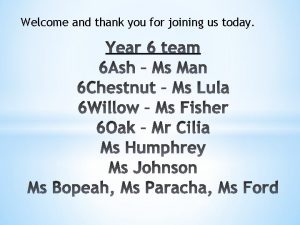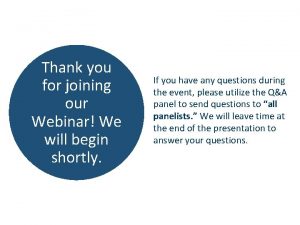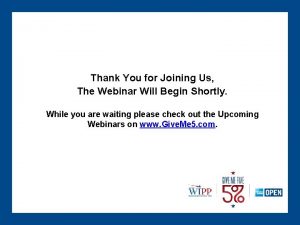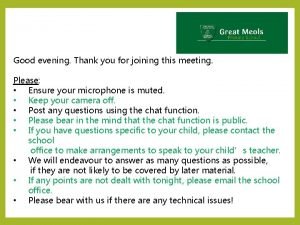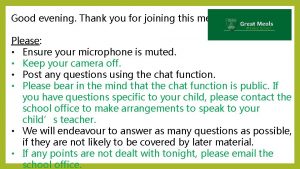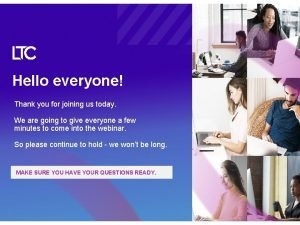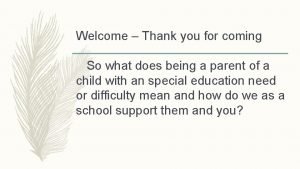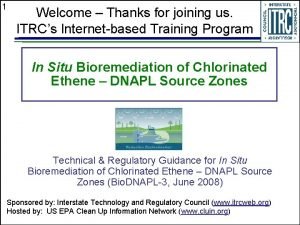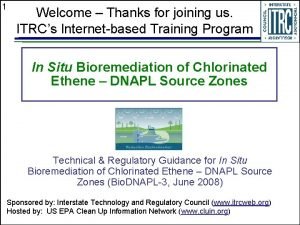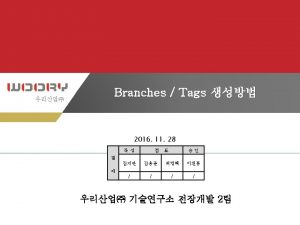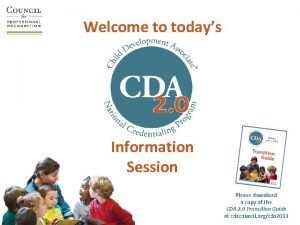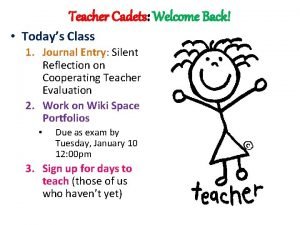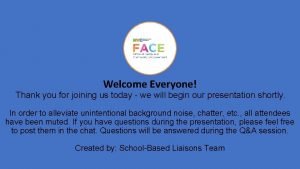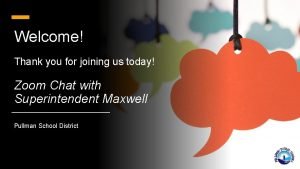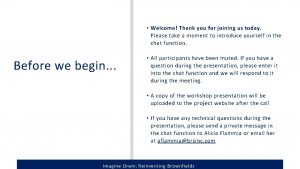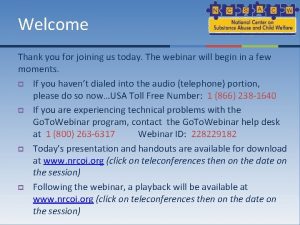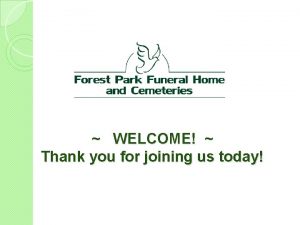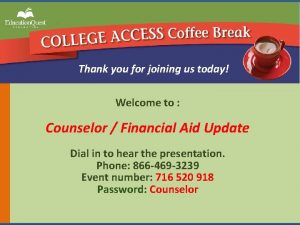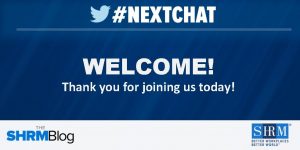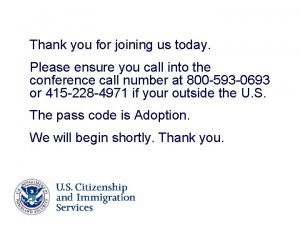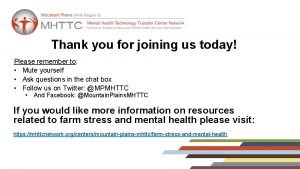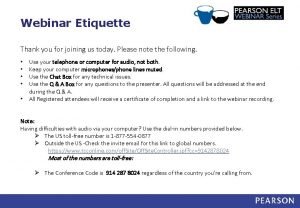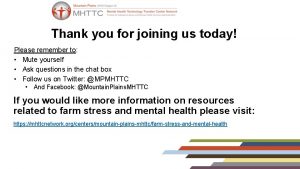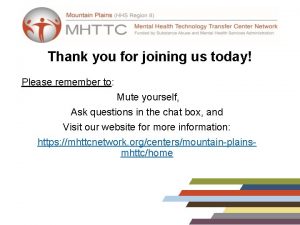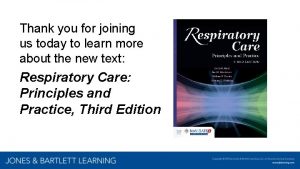Welcome Thank you for joining us today The

















































- Slides: 49

Welcome Thank you for joining us today. The webinar will begin in a few moments. p If you haven’t dialed into the audio (telephone) portion, please do so now…USA Toll Free Number: 1 (866) 238 -1640 p If you are experiencing technical problems with the Go. To. Webinar program, contact the Go. To. Webinar help desk at 1 (800) 263 -6317 Webinar ID: 228229182 p Today’s presentation and handouts are available for download at www. nrcoi. org (click on teleconferences then on the date on the session) p Following the webinar, a playback will be available at www. nrcoi. org (click on teleconferences then on the date on the session)

Part Two of the Webinar Series Being Successful: Meaningful Collaboration to Improve Outcomes for Families with Substance Use Disorders States and Communities Sharing Their Experiences: Strength and Hope for Recovery for Children and Families Nancy K. Young, Director, NCSACW Larry Pasti, Director, Bureau of Planning and Intervention Design, New York Dan Griffin, Court Operations Analyst, Minnesota Robert Long, Administrator, Access and Outpatient Services, Maine Michael Brennan, Policy Associate, Maine Today’s presentation and handouts are available for download at www. nrcoi. org (click on teleconferences then on the date on the session) Presented by the National Child Welfare Resource Center on Organizational Improvement (NRCOI) and the National Center on Substance Abuse and Child Welfare (NCSACW) May 6, 2008

How Do I Ask Questions? • For your convenience, there are two ways to ask questions during this webinar presentation. 1. Type and send your questions through the Question and Answer log located on the bottom half on your panel/dashboard. 2. There will also be time at the end of the webinar for you to ask questions via the conference line.

Today’s Topics p p p Introduction to the National Center on Substance Abuse and Child Welfare (NCSACW) Overview of Technical Assistance: Highlight In-Depth Technical Assistance (IDTA) Program State Experiences: New York State Experiences: Minnesota State Experiences: Maine Questions and Answers

A Program of the Substance Abuse and Mental Health Services Administration Center for Substance Abuse Treatment and the Administration on Children, Youth and Families Children’s Bureau Office on Child Abuse and Neglect

Mission Developing knowledge and providing technical assistance to Federal, State, local agencies and tribes to improve outcomes for families with substance use disorders in the child welfare and family court systems

Technical Assistance Objectives ¥ ¥ ¥ To share knowledge across systems the three systems: substance abuse, child welfare, dependency court To promote understanding of cross systems issues and to advance cross-system collaboration To increase awareness of cross systems issues and approaches To facilitate communication across systems To provide technical assistance to State and county teams To improve outcomes for children and adults

Types of TA Products Collaborative practice and policy tools Information and sharing of models Expert consultation and research Development of issuespecific products • Monographs, white papers, fact sheets Training resources and collaborative facilitation • On-line courses, training materials Longer-term strategic planning and development of protocols and practice models

Levels of Technical Assistance (TA) Level One: Information and Sharing of Models 479 requests Level Two: Expert Consultation and Research 183 requests September 2002 through March 2008 Level Three: Development of Issue- Specific Products Level Four: Strategic Planning, Training Resources and Facilitation 169 requests 12 States 2 Tribes 1 County

In-Depth Technical Assistance (IDTA) Program ¥ ¥ ¥ Designed to facilitate cross-system collaboration among the professionals who work with families affected by substance use disorders that are involved in the child welfare system and may also be involved in the dependency court system Application and acceptance process 15 month program facilitated by a Consultant Liaison Sets priorities for practice and policy changes Develops protocols and implementation plans

IDTA Program by Round One (July 2003 -December 2004) Colorado Florida Michigan Virginia Round Two (January 2005 -March 2006) Arkansas Massachusetts Minnesota Squaxin Island Tribe Round Three (March 2006 -June 2007) Maine New York Texas Round Four (December 2007 -Present) Connecticut Coeur D’Alene Tribe Iowa Orange County

NCSACW IDTA Sites 11 States 2 Tribal Communities 1 County

IDTA Products Developed Strategic Plans Interagency MOUs Cross-system Statements of Shared Values and Guiding Principles Communication Protocols Self-Assessment Tools Logic Models Evaluation Plans Best Practice Tool Kits and Compendiums Screening, Assessment and Practice Protocols Multi-system Training Plans Project Marketing Materials Policy Research and Review Examples of state products are available for free download at http: //www. ncsacw. samhsa. gov

Discussion 1. How can multiple systems collaboratively establish priorities for achieving better outcomes for the families they mutually serve? 2. How do you sustain cross-system collaboration in the face of political climate change, budget cuts, and other factors that are outside your control? 3. What are the most important lessons you've learned to help you make the best uses of your time, energy, money and stakeholders to accomplish your goals? 4. What should jurisdictions that are seeking to develop collaborative relationships avoid in order to be successful?

Larry Pasti, M. A. , Director Bureau of Planning & Intervention Design NYS Office of Children & Family Services NEW YORK

Environmental Context ¥ Existing Collaboration Between ACS-OASAS ¥ CFSR Program Improvement Plan ¥ Statewide Family Treatment Courts ¥ Collocation Project (OCFS-OASAS) Beginning ¥ Local County Child Welfare Collaborative Groups

What We Accomplished ¥ Develop Collaborative Guide (Values, Screening to Discharge, Services) ¥ Develop Cross System Training Plan (includes marketing and use of Guide) ¥ Sharing Success Conference ¥ Strengthened Collaborations Copies of these products are available for free download at http: //www. ncsacw. samhsa. gov

Creative Solutions We Employed to Overcome Hurdles ¥ Bringing ¥ Broad ¥ Be in other partners (OTDA) system involvement in workgroups willing to hang tough and regroup ¥ Communication, ¥ Funding communication (Cross Systems)

Lessons Learned ¥ OTDA Temporary Assistance ¥ Screening ¥ Redefine ¥ Need core competencies for workers for statewide interagency database ¥ Connect ¥ Have and other services IDTA to other initiatives ideas pre-prepared for funding

Post-IDTA: Where We’re Headed from Here ¥ Early ¥ CIP 2008 teleconference Cross Systems Training ¥ Develop training on Collaborative Guide ¥ Develop laminated checklists on core issues

QUESTIONS AND ANSWERS

Dan Griffin, Court Operations Analyst—Chemical Health Minnesota Judicial Branch, State Court Administrator’s Office MINNESOTA

Environmental Context ¥ Child ¥ ¥ Welfare Reform Implementation Child Protection Differential Response Continuum Children’s Justice Initiative ¥ Priority due to presence of overlap between AOD and Child Safety ¥ Desire to improve state and local collaboration to achieve: ¥ ¥ Earlier engagement of parents in assessment, treatment and recovery Improved practice through cross-system collaboration Increased flexibility in individualized planning and treatment services Improved training on overlap impact of AOD and child safety concerns

What We Accomplished ¥ Successful Collaboration between Courts, Chemical Health, CPS, and Parents ¥ ¥ ¥ Shared Values and Principles Enhanced County and Tribal engagement Development of State and Local Advisory Team Structures ¥ Review and Research ¥ Parent Focus Groups and Parent Partner Handbook ¥ Catch the Vision – Through the Eyes of the Child Best Practice Tool Kit ¥ Plans for continued success – training, evaluation, and sustainability plans Copies of these products are available for free download at http: //www. ncsacw. samhsa. gov

Parent Feedback Highlights p Use an approach that is collaborative, culturally competent, family-centered and strengths-based p Deliver interventions and services that engage – not alienate - the parent to make life improvements p Work and talk together as systems to be consistent and keep the focus on AOD and needed services

Parent Feedback Highlights p Minimize the seemingly endless, confusing and often conflicting stream of rules, requirements and paperwork that parents identify as barriers p Design services that reduce the need to separate the family for the purposes of treatment and recovery p Recognize and include fathers in the intervention and recovery process and focus on reparation of father-child relationships

Creative Solutions We Employed to Overcome Hurdles ¥ Needed accountable key staff ¥ Established Tri-team and Core team members ¥ Assigned project lead with continuation of key staff and advisory team structure ¥ Needed honest and effective dedication of resources ¥ Established mutual cooperation between division directors of three entities ¥ Creation of living shared values and principles used to implement and assure project support and resources

Creative Solutions We Employed to Overcome Hurdles ¥ Needed better communication and less misunderstandings ¥ Engage ¥ Clarity and Involve Parents of roles and responsibilities ¥ Created ¥ Relied communication plan upon mutual accountability through a parallel process

Lessons Learned ¥ ¥ ¥ Collaborate with consistency and honesty between primary stakeholders Identify best practices and capacities within own state Embrace state/county/tribal relationships as strengths rather than challenges Assure partnership with representatives from communities of color and specifically persons from Indian Country Assure recommended strategies respond to race and culture needs of families and communities

Post-IDTA: Where We are Today ¥ ¥ Shared FTE between Courts and DHS for continued project leadership Expansion of technical assistance for counties and tribes to implement tool kit strategies and further team building ¥ Conducted 1 st CJI-AOD Team Annual Survey ¥ Encouraging expansion of FDTC and Recovery Specialist practices ¥ Implementation of cross training plan, statewide Connections Matter Child Protection Conference , annual regional lead judges meetings; First formal in-state FDTC training set for January/March 2008 ¥ Continual pursuit of new funding

QUESTIONS AND ANSWERS

Robert Long, L. C. P. C. /L. A. D. C. , Administrator Access and Outpatient Services, Kennebec Behavioral Health Michael Brennan, M. A. , M. S. W. , LCSW, Policy Associate Institute for Child and Family Policy MAINE

Environmental Context ¥ In 2001, the Muskie School completed a study for the Office of Substance on issues related to child welfare and substance abuse and domestic violence and substance abuse. The study showed there was no uniform screening, assessment, or treatment protocols for child welfare cases involving substance abuse. The report concluded that the early identification does lead to better treatment outcomes. The Legislature supported the creation of Child Welfare and Substance Abuse Committee. .

What We Accomplished ¥ ¥ ¥ The Committee researched and reviewed screening instruments; it chose the UNCOPE screening tool because it met the criteria of being reliable, brief, and required minimal training. More immediate access to care increased positive treatment outcomes. Pilot sites were utilized to field test the UNCOPE before it became part of every risk assessment completed by case workers on a state-wide basis. DHHS implemented the universal UNCOPE screening policy and procedures effective June 30, 2006. Copies of these products are available for free download at http: //www. ncsacw. samhsa. gov

Creative Solutions We Employed to Overcome Hurdles ¥ Data analysis revealed a gap in screening opportunities for families who do not warrant an in-person response by CPS. ¥ Of all families deemed appropriate for CPS response, almost 1/3 (32. 9%) were low-to-moderate risk families referred to Community Intervention Program (CIP) contract agencies. ¥ Almost 2/3 (64%) of families with substantiated findings had prior CIP referrals, and often multiple referrals. ¥ CIP agencies were not conducting UNCOPE screening on families referred for services, nor were there policy or contract provisions to do so.

Creative Solutions We Employed to Overcome Hurdles ¥ DHHS implemented UNCOPE screening in its alternative response policy and procedures ¥ Amended DHHS policy to ensure consistency in family assessment guidelines for families referred to CIP providers ¥ Amended CIP contracts to reflect those changes effective July 1, 2007. ¥ Developed and implemented a training for CIP supervisors that included motivational interviewing, using the UNCOPE tool, an overview of substance abuse treatment levels of care, and an orientation of local treatment resources utilizing OSA’s treatment resources website.

What We Accomplished p Concurrently with the screening initiative, the committee reviewed data developed by the Muskie School which indicated that the information reported by substance abuse professionals to DHHS was difficult to utilize in determining the implication of an individual’s relationship with substances on their ability to care for, nurture, and protect their child/children. p The committee developed a set of assessment/evaluation and treatment status report guidelines to be used by substance abuse professionals providing clinical information to DHHS p A training protocol for substance abuse professionals was developed p In February 2006, a pilot training program for selected substance abuse professionals was implemented.

Creative Solutions We Employed to Overcome Hurdles ¥ Data analysis following the pilot report writing training program for substance abuse professionals indicated that a more systemic approach would be needed to provide a adequate network of substance abuse professionals ready, willing, and able to provide specialized reports to individuals screened and referred by DHHS 38

Creative Solutions We Employed to Overcome Hurdles ¥ The committee has developed and created an initiative to create a state-wide network for referral, assessment and treatment utilizing agencies serving families affected by substance abuse and child abuse/neglect. The components include: ¥ Screening and referral ¥ Assessment/Evaluation ¥ Comprehensive ¥ Rapid Guidelines Training Model Access to Assessment/Evaluation and Treatment ¥ Collaboration ¥ Administration 39

Lessons Learned ¥ Leadership from the beginning ¥ Legislative support ¥ Administrative leadership ¥ Involved Stakeholders ¥ Research and staff support ¥ Selecting ¥ There a screening tool is no perfect tool. ¥ Don’t try to accomplish too much in your screening process; it can lead to needless work.

Lessons Learned ¥ Implementing a screening tool and field testing ¥ Training is crucial. Instilling a sense of buy-in is essential. If it is seen as meaningless, it will not be done. Ongoing training and orientation should include the UNCOPE as well as the dynamics of addiction. ¥ In addition to the UNCOPE, include “collateral” information in your assessment. ¥ Supervision makes the difference ¥ UNCOPE screening is incorporated into overall policy on family assessment. ¥ Training is mandatory for new staff members. Monitoring compliance is included in DHHS’s Quality Assurance Program. ¥

Lessons Learned ¥ Having a network of qualified professionals to receive referrals and provide timely assessments/evaluations, treatment and meaningful feedback is an essential component to supporting and maintaining the DHH’S identifying and addressing substance abuse issues. ¥ Collaboration with empathy among systems is a necessary ingredient for developing and maintaining any meaningful change initiative ¥ Ideally, changes within the Child-Welfare and Substance Abuse systems should be implemented concurrently ¥ Anchoring and strengthening changes within existing systems for fostering “best practices” is the key to maintaining change over time. (e. g. -administrative and clinical supervision)

Post-IDTA: Where We’re Headed from Here ¥ The Child Welfare/Substance Abuse Committee has established the “shared outcome” of decreasing the length of time it takes to achieve permanency for Maine’s children. In addition to continued monitoring of UNCOPE screening, initial priorities include: ¥ Instituting the updated Collaborative Inter-agency agreement between DHHS and the Maine State District Court ¥ Data analysis to determine the number of families who fail to achieve permanency for their children due to barriers related to substance abuse. ¥ Developing a network of substance abuse treatment providers trained to better serve the needs of families involved in the child welfare system.

How can multiple systems collaboratively establish priorities for achieving better outcomes for the families they mutually serve? p Get the voice of the parent included as an early step p Keep issues of race and ethnicity and awareness of disparate treatment forefront in all ongoing conversation and work p Establish Common Ground through the discussion and development of your core values and principles p Storyboarding process is useful to identify points of agreement and contention p Use the CFSR measures as a starting point of agreement for achieving outcomes together and creating your roadmap p Model the collaborative behavior at the state level that you want to see at the local level

How do you sustain cross-system collaboration in the face of political climate change, budget cuts, and other factors that are outside your control? ¥ ¥ Focus on how far you have come and on re-energizing or re-vitalization of team relationships Remind yourselves of the passion and original mission of the work and keep your vision looking out through the eyes of the families Find practical ways that you can improve how you work together – change in small ways can have big benefits. What CAN you do with what you’ve got? Stay the course and pull out your roadmap every once in a while

What are the most important lessons you've learned to help you make the best uses of your time, energy, money and stakeholders to accomplish your goals? ¥ ¥ ¥ Identify accountable key staff and a lead person assigned who is driving the vehicle at the state and local level? Be clear about who is doing what – agreement and accountability – create a communication plan Share Cost and staff resources Build on your strengths Cross train

What should jurisdictions that are seeking to develop collaborative relationships avoid in order to be successful? ¥ ¥ ¥ Don’t avoid conflict relationships – acknowledge them and talk them through using solution building language – keep the discussion at a system’s perspective rather than individualizing the conflict. Don’t fall into the Blame Game – Use the “magic word” to assure curiosity is possible and honor the absent Don’t leave out the parent voice – involving parents greatly increases the likelihood that policies will be well informed and faithfully implemented.

QUESTIONS AND ANSWERS

Part Two of the Webinar Series Being Successful: Meaningful Collaboration to Improve Outcomes for Families with Substance Use Disorders States and Communities Sharing Their Experiences: Strength and Hope for Recovery for Children and Families Nancy K. Young, Director, NCSACW Larry Pasti, Director, Bureau of Planning and Intervention Design, New York Dan Griffin, Court Operations Analyst, Minnesota Robert Long, Administrator, Access and Outpatient Services, Maine Michael Brennan, Policy Associate, Maine Today’s presentation and handouts are available for download at www. nrcoi. org (click on teleconferences then on the date on the session) Presented by the National Child Welfare Resource Center on Organizational Improvement (NRCOI) and the National Center on Substance Abuse and Child Welfare (NCSACW) May 6, 2008
 Thank you for joining us today
Thank you for joining us today Welcome and thank you for joining us
Welcome and thank you for joining us Welcome thank you for joining us
Welcome thank you for joining us Thank you for joining our webinar
Thank you for joining our webinar Thank you for joining the webinar
Thank you for joining the webinar Thank you for joining us good evening
Thank you for joining us good evening Thank you for joining us good evening
Thank you for joining us good evening Thank you very much gentlemen
Thank you very much gentlemen Hello everyone thank you for coming
Hello everyone thank you for coming Welcome thank you for coming
Welcome thank you for coming Welcome thanks for joining us
Welcome thanks for joining us Olve
Olve Welcome thanks for joining us
Welcome thanks for joining us Thank you for you listening
Thank you for you listening High and lifted up jesus son of god
High and lifted up jesus son of god Thank you jesus for dying on the cross
Thank you jesus for dying on the cross Thank you any question
Thank you any question Today meeting or today's meeting
Today meeting or today's meeting How was today's class
How was today's class Proposal kickoff meeting agenda
Proposal kickoff meeting agenda Fingerprint galton details
Fingerprint galton details Today's lesson or today lesson
Today's lesson or today lesson Today's lesson or today lesson
Today's lesson or today lesson Yesterday
Yesterday What colour are the reflective studs
What colour are the reflective studs Welcome to today's class
Welcome to today's class Welcome to today's class
Welcome to today's class Welcome to today's class
Welcome to today's class Welcome to today's session
Welcome to today's session Welcome to today's class
Welcome to today's class Welcome to today's class
Welcome to today's class Welcome to today's class
Welcome to today's class Hello and welcome to today
Hello and welcome to today Welcome to today's session
Welcome to today's session Welcome to today's class
Welcome to today's class Wise men three clever are we
Wise men three clever are we Formuö
Formuö Typiska drag för en novell
Typiska drag för en novell Tack för att ni lyssnade bild
Tack för att ni lyssnade bild Ekologiskt fotavtryck
Ekologiskt fotavtryck Varför kallas perioden 1918-1939 för mellankrigstiden?
Varför kallas perioden 1918-1939 för mellankrigstiden? En lathund för arbete med kontinuitetshantering
En lathund för arbete med kontinuitetshantering Kassaregister ideell förening
Kassaregister ideell förening Personlig tidbok
Personlig tidbok Anatomi organ reproduksi
Anatomi organ reproduksi Densitet vatten
Densitet vatten Datorkunskap för nybörjare
Datorkunskap för nybörjare Tack för att ni lyssnade bild
Tack för att ni lyssnade bild Debattinlägg mall
Debattinlägg mall Delegerande ledarskap
Delegerande ledarskap
